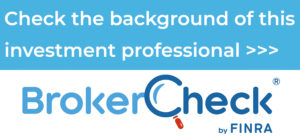FINDING THE RIGHT WORK-LIFE BALANCE
The pandemic blurred some lines, but optimism remains.
At home or at work, our well-being relies on finding the right balance in our life. But finding the right work-life balance isn’t always easy—and was particularly challenging when the U.S was in full-pandemic mode, with more employees working remotely from home as businesses, schools, childcare resources, and families adapted to lockdowns and other restrictions.
A 2022 study by online recruiter ZIPPIA revealed that remote employees were 43% more likely to work more than 40 hours a week, compared to onsite employees. (1) It also showed that one-third of respondents regretted working too much in 2022, and
one-quarter regretted not setting enough boundaries. Seventy-seven percent said they had experienced burnout in their current job at least once, and 72% said they believe that their work-life balance is an important consideration when deciding whether or not to accept a new job.
A survey conducted by Workhuman and used in the Human Workplace Index (HWI)2 had similar results. But things may be
looking up as we move forward, according to the HWI survey. Forty-one percent of survey participants responded that they believed their work-life balance would be improving in 2023, while 21% believed it would not improve. (2)
It’s always a good sign when optimism outweighs pessimism—especially when trying to maintain a work-life balance.
When did the concept of work-life balance first gain attention?
Robert Burns, a 19th century Welsh manufacturer and labor activist, is credited with creating the work-life balance concept in 1817 with the phrase “eight hours labor, eight hours recreation, eight hours rest,” dividing the workday into three equal parts.
That idea took a while to catch on in the United States, where many peopled worked 70 to 100 hours a week in the 1800s and early 1900s. Pressure from labor organizers and shorter hours at companies like Ford Motor eventually led to the New Deal’s Fair Labor Standards Act of 1938, requiring overtime pay for employees working more than 40 hours a week.
Signs you need a work-life balance reset, and tips for moving forward
A balanced lifestyle helps us sustain a healthy lifestyle—finding time for the things we want to do, while keeping up with the things we need to do. However, separating and balancing our personal and professional lives can be challenging—even when the
country’s not facing a pandemic.
Do you need to reset your balance? Here are some indications that you do, according to The Cleveland Clinic: (3)
You stop taking care of your body. You’re not getting enough sleep, exercise, or healthy foods, and you have health concerns but don’t feel like you have time to see a doctor.
Your mental health is going downhill. You’re noticing signs of anxiety or depression, or feeling angry or irritable.
You just don’t care anymore. You no longer feel connected to your colleagues or clients, and your work no longer feels meaningful.
You feel incompetent. You feel that what you’re doing is never enough, and you worry constantly about your job performance.
There are no clear boundaries between work and home, and you can’t take time off without getting calls, texts, and
emails from work. The rise in people working remotely has made it more difficult to draw a line between work hours and off hours.
You’re lonely. You may be constantly connected electronically, but can’t find the time or energy for meaningful interactions with family or friends.
If you’re experiencing any of these, don’t despair. There’s hope—along with these tips from the Cleveland Clinic for finding a
healthier work-life balance: (3)
Create physical distance between your work and home lives. If you’re working from home, create a dedicated office space that’s separate from where you relax or sleep. It doesn’t have to be a separate room. It can simply be a desk or table that’s dedicated to your work.
Disconnect when you’re at home. Spending time checking for texts and emails—and responding to them—raises stress levels, negatively impacts your sleep, and makes it difficult to connect with friends and family members. If it’s too tempting, put your phone in another room, turn it off, or mute it.
Be more efficient at work. Don’t try to multitask—focus on one task at a time until it’s complete. When possible, turn off your phone and close your email to minimize distractions.
Prioritize self-care. Self-care is a necessity—not a luxury—so make sure you set aside time for exercise, plan nutritious meals, and spend quality time with friends and family.
Take a vacation – or staycation. Take time off. Enjoy time with your friends, or take a mental health day where you sleep in and watch movies or read books.
Set boundaries. Have a conversation with your boss and be clear about your boundaries and your needs. Create a list of things that would make your job less stressful, and set up a time to talk about them with your boss.
Look for a new job. You may reach a point where you can’t have the work-life balance you need if you stay in your current position. Your health matters, so you may want to develop an exit plan and search for a new job.
Get professional help. Don’t hesitate to talk to a therapist. Check to see if your employee offers an employee assistance program that can connect you with a mental health profession with experience helping people manage stress.
If you recognize that you need help, remember: You’re not alone. By taking action, you may be the inspiration others need to take steps to improve their work-life balance.
Thanks for checking out the blog.
Gregory Armstrong , CFP®
(1) ZIPPIA: 20+ Vital Work-Life Balance Statistics [2022]: The Difficult Importance of Maintaining It
(2) Human Workplace Index: Looking Back to Plan Forward, December 1, 2022
(3) Cleveland Clinic: 8 Tips for Work-Life Balance—How to take back control of your non-work hours
This material is for general information only and is not intended to provide specific advice or recommendations for any
individual. There is no assurance that the views or strategies discussed are suitable for all investors or will yield positive
outcomes. Investing involves risks including possible loss of principal.
This material was prepared by LPL Financial. Securities and advisory services offered through LPL Financial (LPL), a registered investment advisor and
broker-dealer (member FINRA/SIPC).
Insurance products are offered through LPL or its licensed affiliates. To the extent you are receiving investment advice from a separately registered independent investment advisor that is not an LPL Financial affiliate, please note LPL Financial makes no representation with respect to such entity.
Securities and insurance offered through LPL or its affiliates are: 









